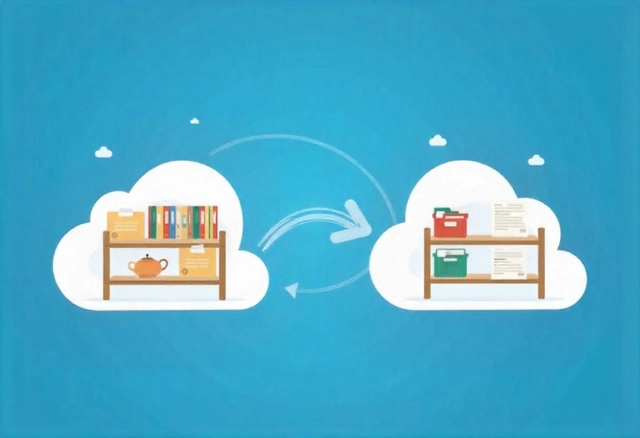Since the introduction of HTML in Web 2.0 that allowed multimedia to be shared over the internet, the ability to distribute images, videos, and other multimedia globally came with a new set of challenges. From download speed, to latency issues and in some cases storage issues, all rolled-in as a single challenge. One of the most common challenges was latency. Websites really loaded slowly because every time images needed to load on a webpage, the browser will need to connect the web application server where the application is hosted to download the image file. So webpages pages loaded text and images, from the same server and the same time. This made websites to be super slow in rendering on the browser. One of the ways that was implemented to improve this speed is by separating the server for storing the media files from the server where the application code is hosted. The next option that was used is caching. According to Wikipedia, “a cache is a block of memory for storing data which is likely used again.” Two key words in the definition that will solve the problem of page loading faster
- Storage of data
- Reuse of the data
These two concepts birthed the idea behind a CDN.
What is a CDN ?
A Content Delivery Network (CDN) is a system of servers placed in different locations around the world to help websites load faster and work more smoothly. Instead of every user trying to get data from one main server, a CDN stores copies of website content (like images, videos, and web pages) on multiple servers. When someone visits a website, the CDN delivers the content from the closest server to their location. This reduces delays, speeds up loading times, and reduces the amount of work the main server has to do. CDNs also help websites handle large amounts of traffic, protect against cyberattacks (like DDoS attacks), and improve reliability by keeping sites online even if one server goes down.
Popular CDNs include Cloudflare, Akamai, and Amazon CloudFront, and they are widely used by businesses, streaming services, and social media platforms to ensure a smooth user experience.
Components of a CDN
Edge Servers
Edge servers are a fundamental component of a Content Delivery Network (CDN), strategically located in multiple geographic regions known as Points of Presence (PoPs). These servers cache and deliver content to users, ensuring that data is served from a location as close as possible to the end user. By reducing the physical distance between the user and the server, edge servers minimize latency, accelerate content delivery, and enhance the overall user experience. The closer the edge server is to the user, the faster the content is delivered, making this distributed architecture a key factor in optimizing performance for websites and web applications on a global scale.
Origin Server
The origin server is the primary server where a website or application’s content is originally hosted and stored. It serves as the source of truth for all data, including static files like images, videos, and scripts, as well as dynamic content. When a Content Delivery Network (CDN) is used, it pulls content from the origin server and caches it on edge servers distributed across various geographic locations. This process ensures that users can access the content quickly and efficiently from a nearby edge server, reducing the load on the origin server and improving overall performance. The origin server remains the central repository, while the CDN handles the distribution and delivery of content to end users.
CDN Network
The CDN network is the underlying infrastructure that connects edge servers and ensures seamless content delivery to users worldwide. It leverages advanced technologies like Anycast, which routes user requests to the nearest edge server based on geographic proximity, BGP (Border Gateway Protocol) routing, which optimizes data paths across the internet, and load balancers, which distribute traffic evenly across servers to prevent overload and ensure high availability. Together, these technologies enable the CDN to deliver content efficiently, reduce latency, and maintain reliable performance, even during high traffic or network congestion. This robust infrastructure is the backbone of a CDN, ensuring fast and consistent access to content for users across the globe.
Caching Mechanism
The caching mechanism in a Content Delivery Network (CDN) is responsible for determining what content is cached, how long it is stored, and when it should be refreshed or invalidated. It operates based on predefined rules and configurations, such as Cache-Control headers set by the origin server, which specify caching directives like max-age or no-cache, and TTL (Time-to-Live), which defines the duration for which content remains valid in the cache before it needs to be updated. By intelligently managing caching policies, the CDN ensures that users receive the most up-to-date content while minimizing unnecessary requests to the origin server, optimizing performance, and reducing latency. This mechanism plays a crucial role in balancing freshness and efficiency in content delivery.
Security Features
CDNs often include a range of security features designed to protect websites and applications from various threats. One key feature is DDoS protection, which helps mitigate distributed denial-of-service attacks by absorbing and dispersing malicious traffic, ensuring the service remains available even during an attack. Another critical feature is the Web Application Firewall (WAF), which safeguards against web-based attacks such as SQL injection, cross-site scripting (XSS), and other vulnerabilities by filtering and monitoring HTTP traffic. Additionally, CDNs use SSL/TLS encryption to secure data in transit, ensuring that sensitive information exchanged between users and servers remains confidential and protected from interception. These security measures collectively enhance the safety, reliability, and trustworthiness of content delivery, making CDNs an essential tool for modern web infrastructure.
How a CDN is Applied to Websites and Web Applications
Improving Website Performance
CDN improves website performance by reducing latency, as content is served from edge servers closer to users, minimizing the time it takes for data to travel. Cached static content, such as images, scripts, and stylesheets, loads faster, enhancing the overall user experience. Additionally, by offloading traffic to the CDN, bandwidth usage on the origin server is significantly reduced, leading to cost savings and improved efficiency.
Handling Traffic Spikes
Maintains a website and application availability by distributing traffic across multiple servers, preventing any single server from becoming overwhelmed. This ensures smooth performance even during high-traffic events such as sales, product launches, or viral content surges, reducing the risk of downtime and improving reliability.
Global Reach
Optimizes performance for users across the globe by serving content from the closest edge server to their location. For example, if a website is hosted in the U.S., a user in Europe will retrieve content from a nearby European server instead of the distant origin server. This minimizes latency and accelerates load times, ensuring a fast and smooth user experience worldwide.
Enhancing Security
Helps keep websites and applications safe by offering security features like DDoS protection, which blocks attacks that try to overload a site with too much traffic. It also includes a Web Application Firewall (WAF) to filter out harmful requests and SSL/TLS encryption to secure data and protect user information. These features work together to prevent cyber threats and keep websites running smoothly and securely.
Optimizing Dynamic Content
Enhances the delivery of dynamic content, such as personalized web pages and API responses, by using advanced techniques like route optimization and TCP acceleration. These methods help find the fastest and most efficient paths for data to travel, reducing delays and improving website responsiveness. This ensures that users receive up-to-date, customized content quickly, no matter where they are.
Video and Media Streaming
Essential for streaming video and audio content, ensuring smooth playback and minimizing buffering by delivering data from servers closest to users. Platforms like Netflix, YouTube, and Spotify rely on CDNs to efficiently distribute content to millions of users worldwide, providing a seamless and high-quality streaming experience.
Popular CDN Providers
Cloudflare: Known for its security features and global network.
Akamai: One of the largest and most established CDN providers.
Amazon CloudFront: Integrated with AWS services for seamless scalability.
Fastly: Focuses on real-time content delivery and edge computing.
Google Cloud CDN: Optimized for Google Cloud Platform users.
Conclusion
The primary purpose of a CDN is improve website load speed and reduce data and latency overhead for downloading multimedia data. CDN has revolutionized the web and even created new possibilities like video streaming capabilities which is widely used by streaming services such as Netflix, Disney+, HBO and other streaming platforms. Hopefully we see the same concept being applied in Artificial Intelligence someday.
Would you like to implement a CDN on your application ? I have an article that guides how to securely setup and configure Amazon Cloudfront.







